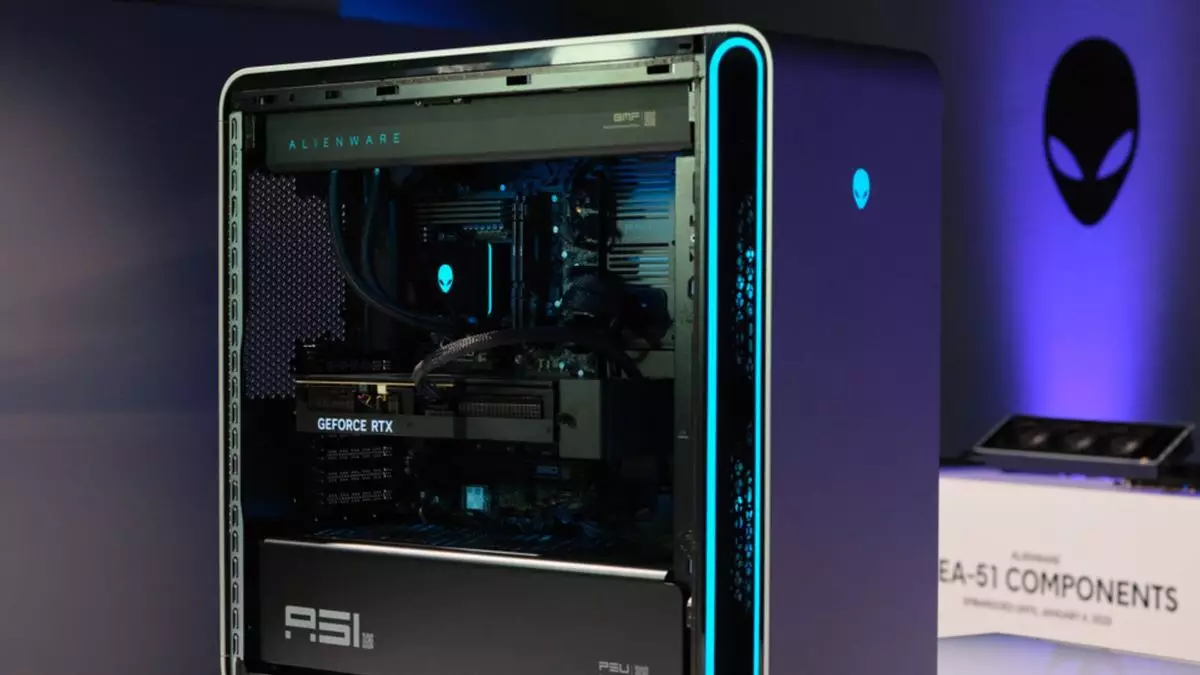In the realm of high-performance gaming desktops, Alienware has carved a niche for itself by blending stunning aesthetics with powerhouse performance. However, its recent unveiling at CES has elicited mixed reactions, particularly regarding the much-anticipated upgradeability of the new Area-51 desktop. The prospect of a rig that provides users with the potential for future improvements has always been alluring. After years of frustration over limited upgrade paths, the gaming community was buzzing with excitement at the thought that Alienware might have finally listened. Yet, amidst this optimism, it appears that hopes may be tempered with some catch-22 stipulations that might leave prospective buyers with a bitter aftertaste.
The $35 Asterisk
At the heart of the controversy lies the revelation that full upgradeability is contingent upon an additional cost. Alienware’s announcement of the Area-51 AAT2250 case came with the caveat that users must purchase a $35 AlienFX board cable conversion kit to harness the rig’s full upgrade potential. The kit includes essential cables that enable connection between third-party motherboards and the Area-51 chassis, pointing to a glaring inconsistency that may frustrate users eager to dive into customizability. For those who expected a seamless transition between existing hardware and the new chassis, the need to spend more might evoke feelings of being shortchanged.
Understanding the Upgrade Limitations
While the Area-51 desktop does allow for the integration of certain motherboards, restrictions apply. Anyone venturing down this upgrade path must first ensure their chosen motherboard aligns with specifications such as ATX12VO compatibility. Moreover, acquiring a new power supply may become necessary if users opt for a motherboard that doesn’t fit the mold. This reality poses a significant barrier, especially for those with older Alienware rigs, as they will find that the new conversion kit is not designed for past models. The discontinuation of compatibility with versions older than the R4 model indicates a strategic shift, but also complicates the proverbial upgrade journey for long-time fans.
Thermal Performance and Aesthetic Appeal
Despite the drawbacks in upgrade potentials, the Area-51 rig’s specifications are undoubtedly impressive. It promises remarkable thermal management, making it “our most quiet, coolest running, and highest performance desktop,” according to Alienware. This enhanced thermal performance is attributed to the new positive pressure airflow system, effectively expelling hot air while minimizing dust infiltration. For gamers who prioritize both aesthetics and functionality, the chassis embodies cutting-edge design elements that are visually compelling. With the latest RTX 50 series graphics cards powering the machine, performance appears to be on par with high expectations for a premium gaming experience.
The Double-Edged Sword of Modular Design
What should have been a foundational shift toward modular design feels instead like a cautious baby step. While Alienware deserves commendation for moving in a direction that allows upgrades, there’s an undeniable irony in that the centerpiece—the motherboard—still remains a bottleneck. The inclusion of innovative features, such as QR codes beside components guiding users through the upgrade process, shows potential. However, the central focus is neutered by lingering limitations that detract from the overall appeal. As the desire for a truly fully upgradeable rig persists, Alienware finds itself at a crossroads of innovation and tradition.
Final Thoughts on Alienware’s Direction
In assessing Alienware’s latest offering, it’s clear that there is a dichotomy at play—the product embodies both progress and frustration. On one hand, the Area-51 desktop is laden with features that any gaming enthusiast would desire, reiterating a commitment to performance and design. On the other hand, the significant stipulations surrounding motherboard upgrades threaten to alienate a segment of the audience yearning for freedom and flexibility. With the gaming community hinging on the promise of user-oriented customization, Alienware’s endeavor lands as a series of moves that engender both excitement and disappointment—a modern gaming paradox that continues to unfold.

